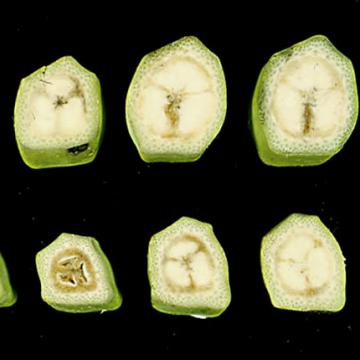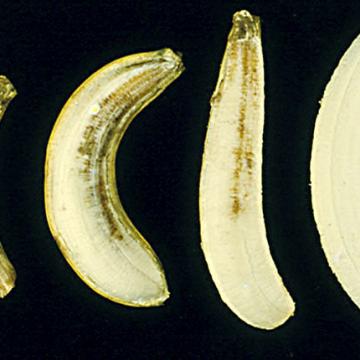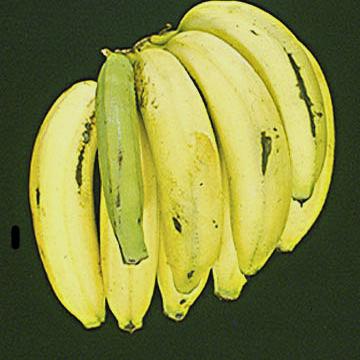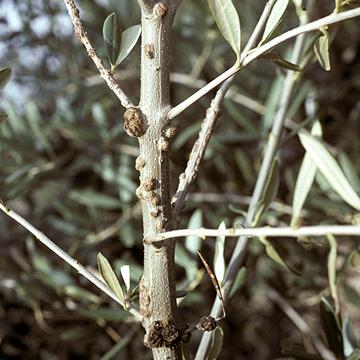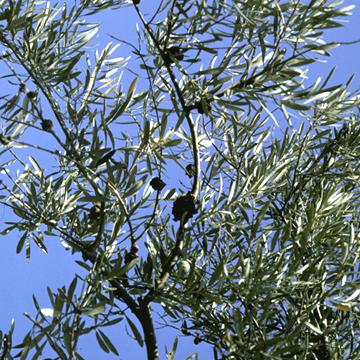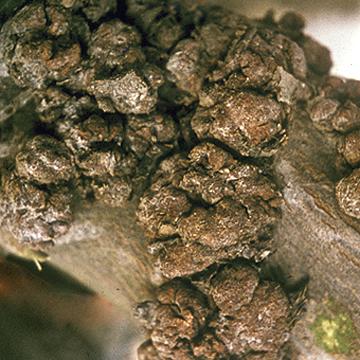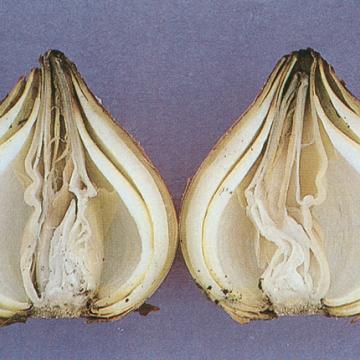DISEASE: Bacterial finger-tip rot
HOST: Banana
Cross sections of fruit with internal discoloration and rot. This disease is also known as Mokillo disease.
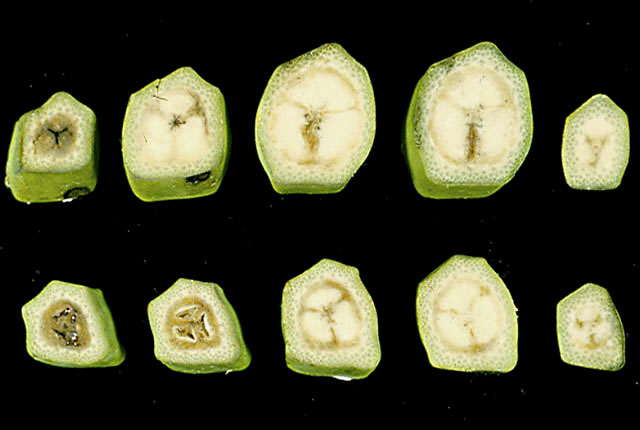
Bacterial finger-tip rot | Banana
DISEASE: Bacterial finger-tip rot
HOST: Banana (Musa sp.)
PATHOGEN: Burkholderia cenocepacia
PATHOGEN SYNONYM: Pseudomonas cenocepacia
SOURCE: I. Buddenhagen
DISEASE: Bacterial finger-tip rot
HOST: Banana
Longitudinal sections of fruit with internal discoloration and rot. Healthy (right).
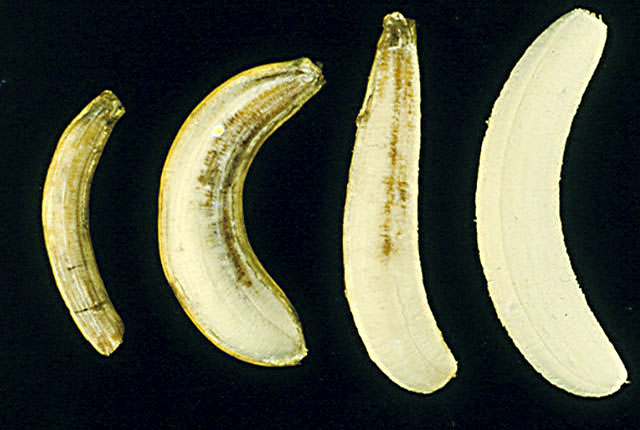
Bacterial finger-tip rot | Banana
DISEASE: Bacterial finger-tip rot
HOST: Banana (Musa sp.)
PATHOGEN: Burkholderia cenocepacia
PATHOGEN SYNONYM: Pseudomonas cenocepacia
SOURCE: I. Buddenhagen
DISEASE: Bacterial finger-tip rot
HOST: Banana
Diseased banana hand with external discoloration.
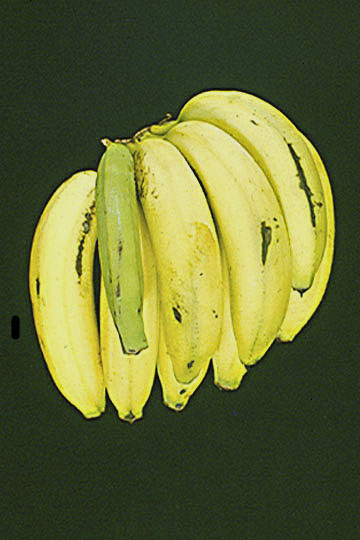
Bacterial finger-tip rot | Banana
DISEASE: Bacterial finger-tip rot
HOST: Banana (Musa sp.)
PATHOGEN: Burkholderia cenocepacia
PATHOGEN SYNONYM: Pseudomonas cenocepacia
SOURCE: I. Buddenhagen
DISEASE: Olive knot
HOST: Olive
Multiple infections of young stems. The bacterium invades vascular tissues during certain times of the year and may be isolated from branches that appear healthy.
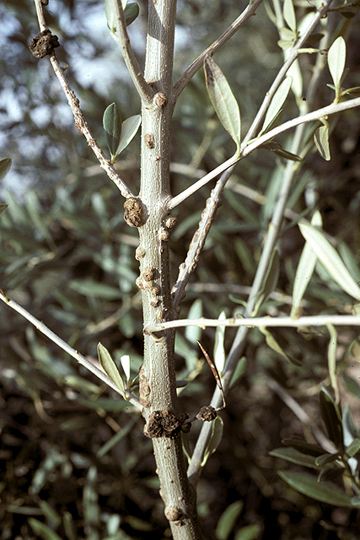
Olive knot | Olive
DISEASE: Olive knot
HOST: Olive (Olea europaea)
PATHOGEN: Pseudomonas savastanoi pv. savastanoi
SOURCE: M. Schroth
DISEASE: Olive knot
HOST: Olive
Tree with knots/galls on branches along with twig dieback, which is associated with knots. Fusarium and Diplodia spp. infect through knots and are thought to be main reason for dieback.
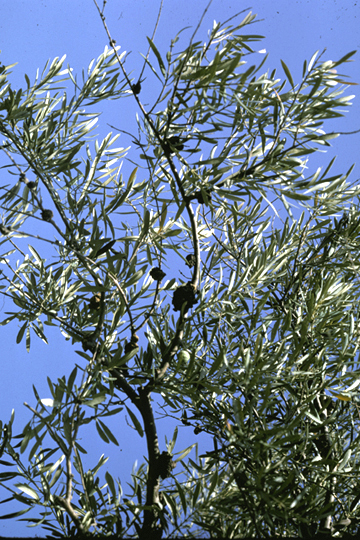
Olive knot | Olive
DISEASE: Olive knot
HOST: Olive (Olea europaea)
PATHOGEN: Pseudomonas savastanoi pv. savastanoi
SOURCE: M. Schroth
DISEASE: Olive knot
HOST: Olive
Multiple infections on olive branch. Knots at this stage begin to die from the outside in and are infected by several fungi.
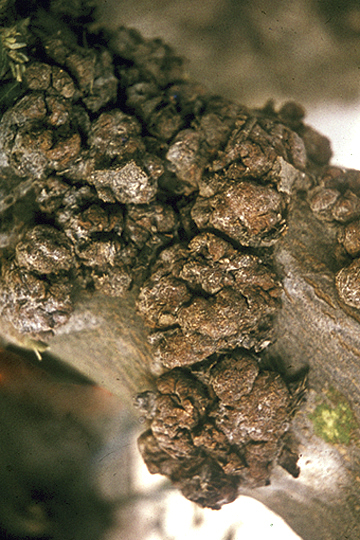
Olive knot | Olive
DISEASE: Olive knot
HOST: Olive (Olea europaea)
PATHOGEN: Pseudomonas savastanoi pv. savastanoi
SOURCE: M. Schroth
DISEASE: Slippery skin
HOST: Onion
Rot progresses from the top of infected scales and eventually internal tissues rot. In early stages, the only external symptoms may be softening of the neck.
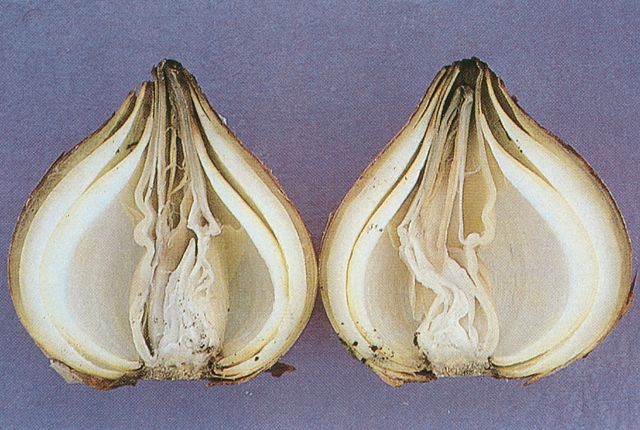
Slippery skin | Onion
DISEASE: Slippery skin
HOST: Onion (Allium cepa)
PATHOGEN: Burkholderia gladioli pv. alliicola
PATHOGEN SYNONYM: Pseudomonas gladioli pv. alliicola
SOURCE: H. Schwartz


